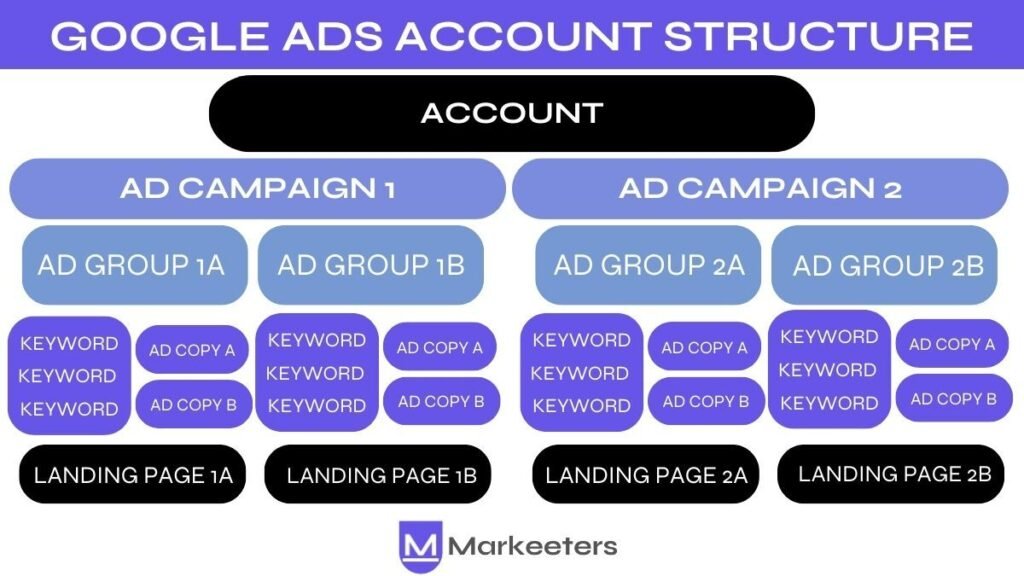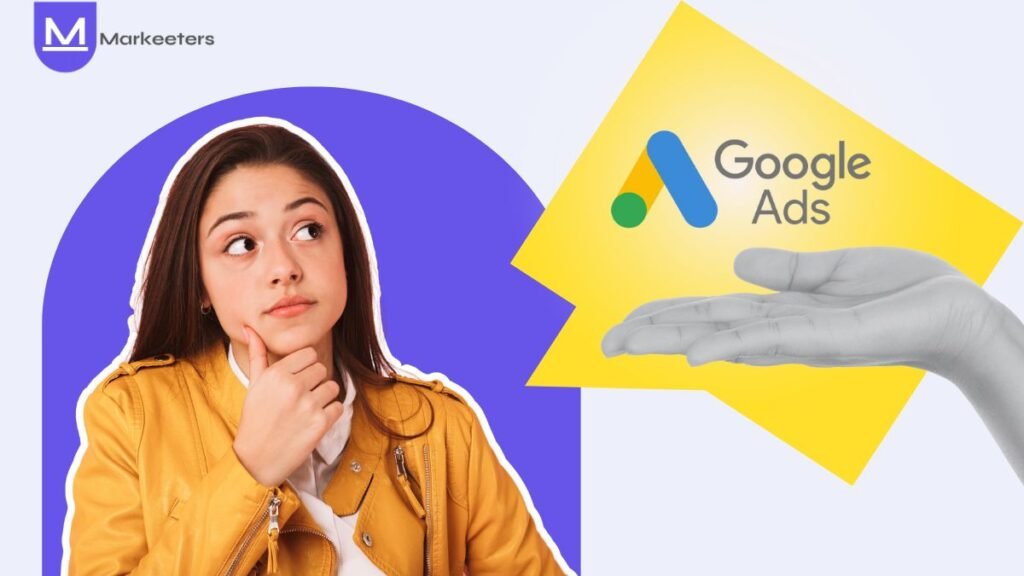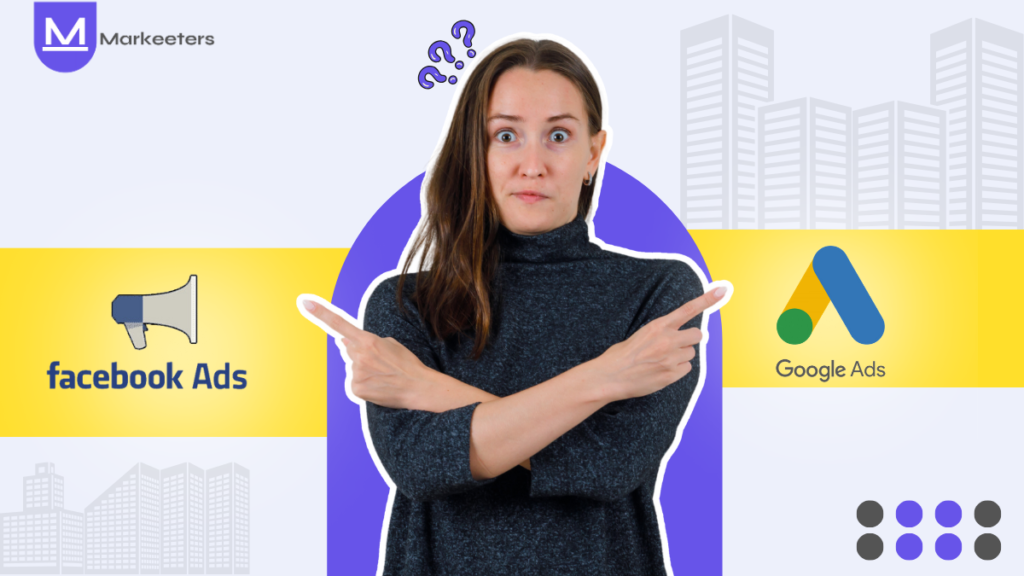Search engine marketing (SEM) has become a key component of digital marketing today. But what exactly is SEM and how can you use it most effectively? This guide will overview everything your business needs to know to get started with SEM the right way.
What is Search Engine Marketing?
Search engine marketing, or SEM for short, is one of those fancy marketing terms that can be confusing at first glance. It refers to different forms of paid online advertising that allow businesses like yours to promote their products and services to people when they are actively searching on Google, Bing, or other search engines.
The most popular type of SEM is Pay-Per-Click advertising (PPC). This is where you create text-based ads that can show up on the first page of search results when someone looks for keywords related to your business. For example, if you sell shoes online, your ad might show up when someone searches for “buy women’s running shoes.”
The great thing about PPC ads is that you only pay when someone actually clicks on your ad, hence the name Pay-Per-Click. The amount you pay depends on factors like how competitive your keywords are and the quality of your ads. But you can set a daily budget cap so you’re always in control of your costs.
This type of advertising is powerful because you can put your business in front of people exactly when they are searching for your products or services. It allows you to find customers who may not already be familiar with your brand yet.
Some other common SEM services are Google Shopping ads, Microsoft Advertising, and Amazon Marketing. But Google Ads, also known as AdWords, is the largest and most popular network.
Why SEM is a Must for Your Business?
SEM is kind of like having an exhibitor booth at a trade show or industry convention. Here’s how I would relate the two:
Your Exhibitor Booth = Your PPC Ads
- Instead of passively waiting for visitors like with organic SEO, you’re actively promoting yourself.
- You get to choose the best location (keywords) to get visibility for your booth/ads.
- You pay for the floor space/keywords based on competition and demand. Prime real estate costs more.
Engaged Attendees = High Intent Searchers
- People who take time to attend an event are more engaged, like those searching for your keywords.
- You can interact directly with attendees at your booth just like searchers can click your ad.
6 key reasons why using SEM can benefit your business:
- Targeted Reach – SEM ads allow you to appear in front of people who are actively searching for your products or services. This targets users with high purchase intent rather than just general awareness.
- New Customer Acquisition – PPC ads help drive new traffic to your site by reaching audiences that may not yet know your brand. SEM expands your potential customer base.
- Cost-Effective – You only pay each time someone clicks your ad, so you can control costs by setting daily budget caps. And you’re reaching engaged users who are likely to convert.
- Flexibility – SEM campaigns can be adjusted quickly based on performance data. Increase budgets for high-performing keywords or pause low performers.
- Brand Awareness – Well-designed and targeted ads can increase awareness and introduce new users to your brand when they are searching for relevant terms.
- Sales Enablement – SEM allows you to easily promote time-sensitive offers like sales, special deals, events, and more to capitalize on interest.
SEM vs SEO
SEM is like paying for an ad space to promote your business. You bid on keywords so your ads show up at the top of search results when people look for your stuff. Cha-ching – you pay each time someone clicks your ad.
SEO is like making your online store appeal to customers. You tweak your website content and structure so it ranks higher in organic search results. Free visibility!
SEM is a quick win – you can get your ads running right away. SEO takes time to improve your ranking step-by-step.
Ideally, you want both – SEM pulls in customers with paid ads while SEO slowly grows your organic traffic. They work hand-in-hand!
SEM requires a budget to buy those ads. SEO just takes effort with on-page optimization, building quality backlinks and more. You can also checkout our 10 important SEO metrics to track performance to know more about how SEO work.
So in a nutshell:
SEM = Paid ads SEO = Organic ranking
SEM brings fast results. SEO is slow and steady.
Together they’re a match made in marketing heaven!
How does Search Engine Marketing work?
The effectiveness of an SEM strategy is determined by a company’s ability to identify and bid on strategic keywords and phrases that are relevant to their offerings and industry verticals.
Say someone searches “cute dog toys” on Google. Your pet store sells cute dog toys, so you wanna get your ad in front of that person, right?
That’s where SEM comes in. You bid on keywords like “dog toys” or “pet supplies” to get your ads to show up at the top of the results page. Prime ad space goes to the highest bidder!
You create little text ads with catchy headlines and descriptions that make searchers click over to your website. You pay the search engine only when someone actually clicks your ad.
The cost per click depends on how many other businesses are bidding for those same keywords. More competition equals higher bids needed to win the top spots.
It takes regular monitoring to see which keywords and ads perform best. Tweak your bids and ad copy over time to get more bang for your buck.
When done right, the targeted traffic from SEM to your online store leads to more sales and customers! Those little ads can make a big difference to your bottom line.
Bid on the right keywords, make effective ads, and keep optimizing the campaign. Soon those SEM ads will have customers clicking straight to your products!
Setting up a Google Ad Account And Campaign Structure
Google ad account can be set up by following these instructions provided by Google. But, don’t rush into creating your first ad campaign, read these expert tips before you start structuring your campaigns:
- Campaigns: Create separate campaigns for different products or services, target locations, or campaign goals.
- Ad Groups: Divide your campaigns into focused ad groups with closely related keywords and ads.
- Keywords: Select relevant and high-performing keywords that match user search intent.
- Ad Copy: Craft compelling ad copy that includes keywords and highlights your unique selling points.
- Landing Pages: Ensure your landing pages are relevant to your ads and offer a seamless user experience.
- Extensions: Utilize ad extensions to provide additional information and encourage clicks.
A well-structured Google Ads account looks like this:

Remember, setting up an effective Google Ads account and campaign structure requires ongoing monitoring and optimization to maximize your results. Regularly analyze your campaign’s performance and make data-driven adjustments for the best outcomes.
Google Bidding Process
How the bidding process works in Google Ads:
- Google Ads uses an auction-style system to determine ad rankings. Advertisers bid on keywords based on what they’re willing to pay each time someone clicks their ad.
- You set a maximum cost-per-click (CPC) bid when setting up your ad groups and campaigns. The higher the bid, the better chance of securing top ad placement.
- But the bid amount isn’t everything. Google also calculates an Ad Rank for each ad based on expected CTR, landing page experience, relevance, and other factors. A higher Ad Rank can beat a higher bid.
- When someone searches, Google runs an instant auction and determines a minimum bid needed to show ads on page 1 based on participation. If your bid meets or exceeds that, you can appear in the results.
- The actual CPC you end up paying is the minimum bid needed to hold your position whenever your ad is shown. If the #1 ad gets more clicks, their bid becomes the minimum CPC.
- Monitoring your campaign metrics helps you adjust bids to balance ad placement and costs. Raising bids on high-performing keywords and lowering ones with low CTR maximizes ROI.
- Google is essentially rewarding advertisers who offer the most relevant and useful experience for searchers. The top ad spot goes to who Google calculates has the optimal combination of bid and overall ad/landing page quality.
The main factors Google considers to determine which ads win the top placements in search results are:
- Bid Amount – Advertisers set a maximum cost-per-click (CPC) bid for keywords. Higher bids tell Google you’re willing to pay more for clicks. All else equal, the highest bid wins the top spot.
- Ad Rank – This measures the overall quality and expected performance of your ads. It’s based on your bid along with expected CTR (click-through rate), landing page experience, and other factors. A higher Ad Rank beats a higher bid alone.
- Quality Score – This is Google’s 1-10 score assessing your keyword and landing page relevance. Higher quality scores improve your ad rank. Optimizing landing pages for the keyword and showcasing your offerings helps Quality Score.
- Extensions – Adding extensions like call buttons, location info, etc. can improve ad visibility. Google rewards relevant, useful extensions.
So in summary, you want a competitive bid along with great ad copy, tight keyword-to-landing page relevance, and useful extensions. Monitoring metrics like CTR and tweaking bits over time also helps ads perform their best.
Choosing the Right Keywords for SEM Success
Keyword selection is a foundational component of any effective Search Engine Marketing (SEM) campaign. The terms and phrases you target through paid advertising should be strategic and align closely with your business goals. Follow these tips for picking winning keywords for PPC ads:
- Understand Searcher Intent:
Categorize potential keywords based on user intent to inform your SEM approach:
Commercial intent – Queries like “buy shoes online” indicate a user is ready to purchase. Bid competitively on these transactional commercial keywords.
Informational intent – Searches like “types of running shoes” are early research stage. Target these users with helpful content before trying to convert.
Balance both – Some keywords like “best-running shoes” have blended intent. Cover them through both SEM ads and SEO-optimized content. - Analyze Keyword Volume: Search volume indicates how often a keyword is queried each month. High-volume keywords have more traffic potential, but also more competition. Low-volume ones are easier to rank for, but won’t drive as many visits. Gauge volume using Google’s Keyword Planner.
- Factor in Competition: The bid price reflects competitor demand for a keyword. Higher CPC indicates more advertisers are bidding for that term. Review competition levels and overlap your target keywords with high volume/low competition options for the ideal SEM mix.
- Evaluate Cost Per Click: CPC is what you pay each time someone clicks your ad. Average CPC gives a benchmark, but your bid strategy factors in what you’re willing to spend relative to conversion value. Carry out ROI calculations for your business before setting CPC bids.
- Use Negative Keywords: Negative keywords prevent your ads from showing for irrelevant queries that might otherwise trigger them. This avoids wasted spend on low-converting traffic. Add negatives like misspellings and unrelated product terms.
- Avoid Duplicate Keywords: Don’t bid on the same root keyword across multiple ad groups as that dilutes traffic and effectiveness. Consolidate keywords for consistency. Review your account for duplicates.
- Continually Refine Your List: Start with a core list of 10-20 keywords and expand from there once you assess performance. Eliminate low-performing terms, adjust bids, and add new options. Keyword optimization never stops.
Choosing keywords that balance volume, intent, and cost will fuel an SEM campaign that delivers ROI. Analyze metrics like click-through-rate and conversion rates to guide keyword selections over time. With the right keywords driving traffic, your ads will reach receptive audiences ready to click.
Conclusion
SEM, for sure, helps you connect with potential customers, turning their curiosity into meaningful actions. By using the right keywords, crafting catchy ads, and smartly refining your approach, you can make SEM work for you. This drives more visitors and fuels your business’s expansion. Also as we know SEM requires a budget to run ads, you can read our this helpful content How to Setup Marketing Budget for Your Startup.
Now that you are familiar with the terminology and the basics of SEM, it is time to design your first paid search ad campaign. Nobody has ever become a pro overnight, so don’t be afraid of making some mistakes as you will learn on your way. Just keep in mind whatever you have learned in this post and work your way through to a successful ad campaign that brings you results. Keep learning!!





